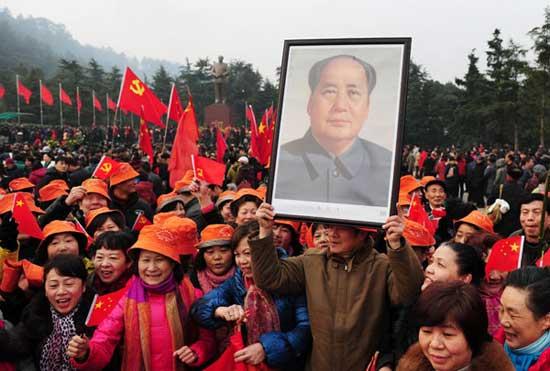
Thursday.
In Mao Zedong’s hometown of Shaoshan in the central Province of Hunan, authorities offered flowers to the statue of the late leader. Locals, including Mao’s relatives bowed to pay their respect.
Then, Mao’s admirers from across the country came to a memorial hall established to remember the leader.
In the Jinggang Mountains, regarded as the birthplace of the Chinese revolution led by Mao Zedong, visitors tried to experience the tough life of China’s Red Army soldiers.
Dressed in the uniforms of the Red Army, nearly a hundred people marched through a five-kilometer road that Mao and his troops walked along decades ago.
"The path that we walk on was not the most difficult in that age. We just walked a little section. "
And in Xibaipo in the northern province of Hebei, a symposium was held to remember Mao Zedong..
This village served as the Communist Party of China’s headquarters in the late 1940s. It was here when Mao and his comrades led the battles that ultimately drove the Kuomingtang out of the Mainland.
And in Yan’an in northwest China, a key base of the Chinese Red Army, an art exhibition featuring the Chinese revolution was on display for visitors.
"I painted the Qiankun bay of the Yellow River. Years ago, Chairman Mao’s troops crossed the Yellow River and became victorious. So my painting is to commemorate the fore-runners who made great contributions to China." Zhao Zhenchuan, honorable president of Shanxi Artists Association, said.
Born in 1893, Mao Zedong was the leader of the Chinese Communist Party, the People’s Republic of China and the Chinese People's Liberation Army.
Today, his influence is still pervasive across the country. He is regarded as one of the most influential and decisive figures in China’s modern history.
本站部份资料来自网络或由网友提供,如有问题请速与我们联系,我们将立即处理!
版权所有©四级英语单词 网站地图 陇ICP备2023000160号-4
免责声明:本站非营利性站点,以方便网友为主,仅供学习。